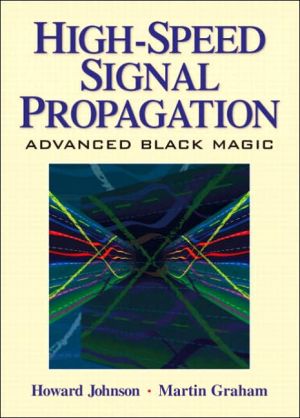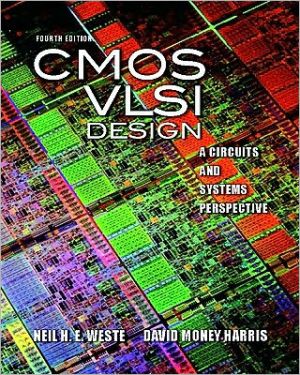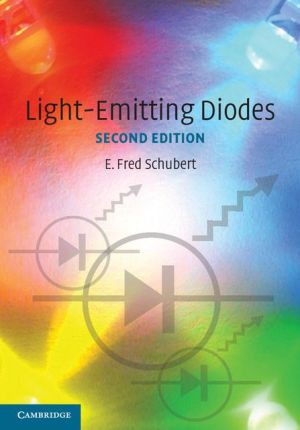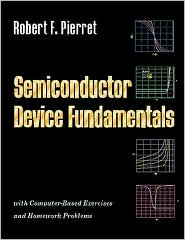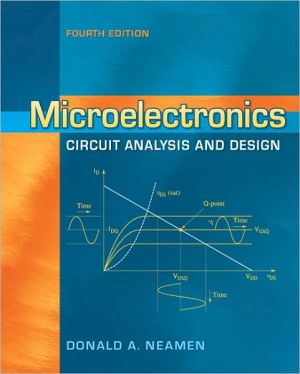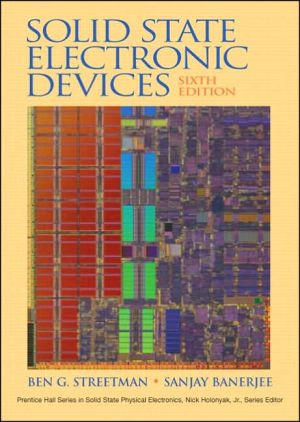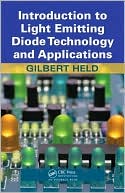High-Speed Signal Propagation
Raves for Dr. Johnson's previous classic, High-Speed Digital Design!\ "....one of the finest efforts to come along in the field of applied high-speed digital design because of its focus on providing tools for the whole design team bringing a high-speed product to life. For all the PCB designers and circuit designers out there, buy it; read it; keep it." -- Dan Baumgartner, Printed Circuit Design\ Faster and farther: State-of-the-art signal transmission techniques\ In High-Speed Signal...
Search in google:
This reference for experienced designers presents advanced techniques for high-speed signal propagation. More specialized than its companion volume, High Speed Digital Design (by the same authors), this text covers issues relevant to transmission at the upper limits of speed and distance. Topics include printed circuit traces, differential signaling, inter-cabinet connections, clock distribution, and simulation. The text is based upon material taken from courses taught by Johnson at Oxford University and other sites. Annotation ©2003 Book News, Inc., Portland, OR Printed Circuit Design - Dan Baumgartner ...one of the finest efforts to come along in the field of applied high-speed digital design because of its focus on providing tools for the whole design team bringing a high-speed product to life. For all the PCB designers and circuit designers out there, buy it; read it; keep it.
PREFACE GLOSSARY OF SYMBOLS 1 FUNDAMENTALS 1.1 Impedance of Linear, Time-Invariant, Lumped-Element Circuits 1.2 Power Ratios 1.3 Rules of Scaling 1.4 The Concept of Resonance 1.5 Extra for Experts: Maximal Linear System Response to a Digital Input 2 TRANSMISSION LINE PARAMETERS 2.1 Telegrapher? Equations 2.2 Derivation of Telegrapher? Equations 2.3 Ideal Transmission Line 2.4 DC Resistance 2.5 DC Conductance 2.6 Skin Effect 2.7 Skin-Effect Inductance 2.8 Modeling Internal Impedance 2.9 Concentric-Ring Skin-Effect Mode 2.10 Proximity Effect 2.11 Surface Roughness 2.12 Dielectric Effects 2.13 Impedance in Series with the Return Path 2.14 Slow-Wave Mode On-Chip 3 PERFORMANCE REGIONS 3.1 Signal Propagation Model 3.2 Hierarchy of Regions 3.3 Necessary Mathematics: Input Impedance and Transfer Function 3.4 Lumped-Element Region 3.5 RC Region 3.6 LC Region (Constant-Loss Region) 3.7 Skin-Effect Region 3.8 Dielectric Loss Region 3.9 Waveguide Dispersion Region 3.10 Summary of Breakpoints Between Regions 3.11 Equivalence Principle for Transmission Media 3.12 Scaling Copper Transmission Media 3.13 Scaling Multimode Fiber-Optic Cables 3.14 Linear Equalization: Long Backplane Trace Example 3.15 Adaptive Equalization: Accelerant Networks Transceiver 4 FREQUENCY-DOMAIN MODELING 4.1 Going Nonlinear 4.2 Approximations to the Fourier Transform 4.3 Discrete Time Mapping 4.4 Other Limitations of the FFT 4.5 Normalizing the Output of an FFT Routine 4.6 Useful Fourier Transform-Pairs 4.7 Effect of Inadequate Sampling Rate 4.8 Implementation of Frequency-Domain Simulation 4.9 Embellishments 4.10 Checking the Output of Your FFT Routine 5 PCB (PRINTED-CIRCUIT BOARD) TRACES 5.1 Pcb Signal Propagation 5.2 Limits to Attainable Distance 5.3 Pcb Noise and Interference 5.4 Pcb Connectors 5.5 Modeling Vias 5.6 The Future of On-Chip Interconnections 6 DIFFERENTIAL SIGNALING 6.1 Single-Ended Circuits 6.2 Two-Wire Circuits 6.3 Differential Signaling 6.4 Differential and Common-Mode Voltages and Currents 6.5 Differential and Common-Mode Velocity 6.6 Common-Mode Balance 6.7 Common-Mode Range 6.8 Differential to Common-Mode Conversion 6.9 Differential Impedance 6.10 Pcb Configurations 6.11 Pcb Applications 6.12 Intercabinet Applications 6.13 LVDS Signaling 7 GENERIC BUILDING-CABLING STANDARDS 7.1 Generic Cabling Architecture 7.2 SNR Budgeting 7.3 Glossary of Cabling Terms 7.4 Preferred Cable Combinations 7.5 FAQ: Building-Cabling Practices 7.6 Crossover Wiring 7.7 Plenum-Rated Cables 7.8 Laying cables in an Uncooled Attic Space 7.9 FAQ: Older Cable Types 8 100-OHM BALANCED TWISTEDPAIR CABLING 8.1 UTP Signal Propagation 8.2 UTP Transmission Example: 10BASE-T 8.3 UTP Noise and Interference 8.4 UTP Connectors 8.5 Issues with Screening 8.6 Category-3 UTP at Elevated Temperature 9 150-OHM STP-A CABLING 9.1 150-. STP-A Signal Propagation 9.2 150-. STP-A Noise and Interference 9.3 150-. STP-A: Skew 9.4 150-. STP-A: Radiation and Safety 9.5 150-. STP-A: Comparison with UTP 9.6 150-. STP-A Connectors 10 COAXIAL CABLING 10.1 Coaxial Signal Propagation 10.2 Coaxial Cable Noise and Interference 10.3 Coaxial Cable Connectors 11 FIBER-OPTIC CABLING 11.1 Making Glass Fiber 11.2 Finished Core Specifications 11.3 Cabling the Fiber 11.4 Wavelengths of Operation 11.5 Multimode Glass Fiber-Optic Cabling 11.6 Single-Mode Fiber-Optic Cabling 12 CLOCK DISTRIBUTION 12.1 Extra Fries, Please 12.2 Arithmetic of Clock Skew 12.3 Clock Repeaters 12.4 Stripline vs. Microstrip Delay 12.5 Importance of Terminating Clock Lines 12.6 Effect of Clock Receiver Thresholds 12.7 Effect of Split Termination 12.8 Intentional Delay Adjustments 12.9 Driving Multiple Loads with Source Termination 12.10 Daisy-Chain Clock Distribution 12.11 The Jitters 12.12 Power Supply Filtering for Clock Sources, Repeaters, and PLL Circuits 12.13 Intentional Clock Modulation 12.14 Reduced-Voltage Signaling 12.15 Controlling Crosstalk on Clock Lines 12.16 Reducing Emissions 13 TIME-DOMAIN SIMULATION TOOLS AND METHODS 13.1 Ringing in a New Era 13.2 Signal Integrity Simulation Process 13.3 The Underlying Simulation Engine 13.4 IBIS (I/O Buffer Information Specification) 13.5 IBIS: History and Future Direction 13.6 IBIS: Issues with Interpolation 13.7 IBIS: Issues with SSO Noise 13.8 Nature of EMC Work 13.9 Power and Ground Resonance COLLECTED REFERENCES POINTS TO REMEMBER APPENDIX A Building a Signal Integrity Department APPENDIX B Calculation of Loss Slope APPENDIX C Two-Port Analysis APPENDIX D Accuracy of Pi Model APPENDIX E erf( ) INDEX
\ From Barnes & NobleThe Barnes & Noble Review\ Heads up to digital designers who want to excel -- this book is for you! After years of working in the field, Howard Johnson and Martin Graham convey their extensive knowledge in a straightforward way and have packed their work full of practical insights gained from experience. This is the reference that will keep you up-to-speed in the fast-moving world of digital design. \ Each chapter in this book treats a specialized topic having to do with high-speed signal propagation. The authors have written the chapters in such a way that they may be studied in any order. For instance, Chapters 1 and 2 present the underlying physical theory of various transmission-line parameters, including the skin effect, proximity effect, dielectric loss, and surface roughness. Next, Chapter 3 develops a generated frequency-response model common to all conductive media. Chapter 4 outlines the calculation of time-domain waveforms from frequency-domain transfer functions. And, Chapters 5 through 11 discuss specific transmission media, including single-ended printed circuit board (PCB) traces, differential media, general building wiring standards, unshielded twisted-pair wiring, shielded twisted-pair wiring, coaxial cables, and fiber. Chapter 12 addresses miscellaneous issues concerning clock distribution. Finally, Chapter 13 explores the limitations of Spice and I/O Buffer Information Specification (IBIS) simulation methods.\ Filled with information and enlivened with experience, this outstanding manual is just right for keeping your skills up-to-date in the rapidly growing field of digital design. A must. John Vacca\ John Vacca, the former computer security official (CSO) for NASA's space station program (Freedom), has written 38 books about advanced storage, computer security, and aerospace technology.\ \ \ \ \ \ Dan Baumgartner...one of the finest efforts to come along in the field of applied high-speed digital design because of its focus on providing tools for the whole design team bringing a high-speed product to life. For all the PCB designers and circuit designers out there, buy it; read it; keep it.\ —Printed Circuit Design\ \
